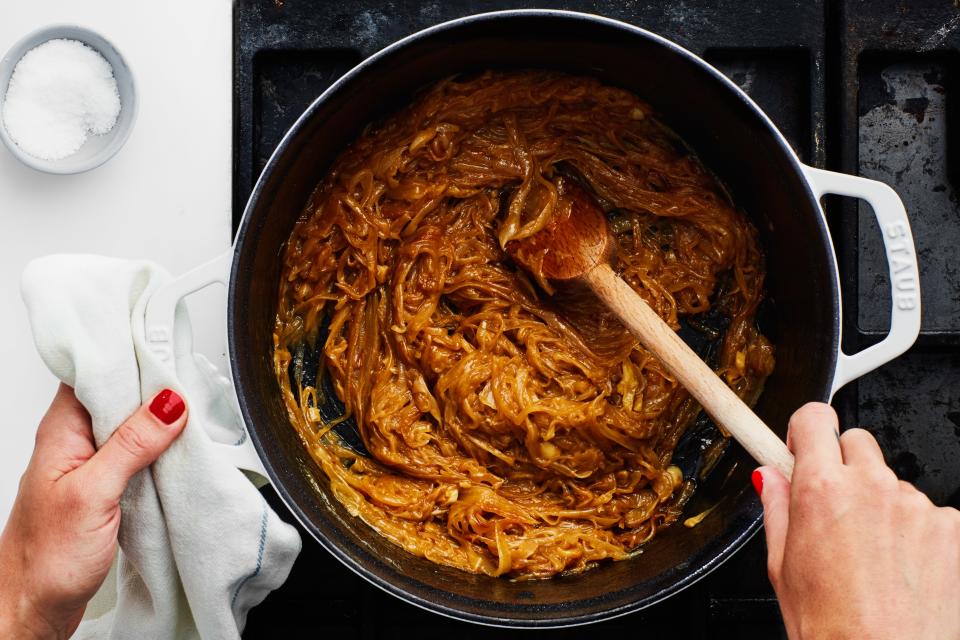The Best Oil to Cook With Isn’t Olive or Vegetable—It’s Both
At one of the first restaurants where I was a line-cook, we had three different types of oil on heavy rotation. The first was a standard, no-fuss vegetable oil used primarily for filling the deep fryer. The second was a fancy-seeming extra-virgin olive oil—a “finishing oil”—which was used judiciously, primarily by the chef who drizzled a bit of it onto plates just before they went out to the dining room. The third was a mysteriously-named substance in a yellow jug called “blended oil” which, as its name suggested, was an economical mix of canola oil and (an apparently nominal amount of) extra-virgin olive oil. Thinking back, it probably tasted pretty lousy, but it was our go-to, used with abandon for pan frying, vinaigrettes, aioli, and just about everything else you could think of.
I never encountered that strange blended oil after I left that job, but I started to think about it again a few years back when, after doing some research, I finally got serious about stocking high-quality extra-virgin olive oil exclusively. I quickly ran into two problems. The first was that my favorite brands were expensive—a small-ish bottle could easily add twenty dollars to my grocery bill—and disappeared alarmingly fast.
The second problem was, counterintuitively, how good these oils tasted. I started to find that the same peppery, green-grassy flavors that I loved in these extra-virgin olive oils could easily overpower simple vinaigrettes and overwhelm delicate sautés; I simultaneously had too much flavor and not enough of it.

Caramelized Onion Pasta process
Suddenly, that yellow jug of blended oil started to make more sense. So I began to experiment with my own hybrid oils at home. When I picked up a nice tin of extra-virgin, I would measure out a cup of it and combine it in a squeeze bottle with around two cups of a good neutral oil like grapeseed or sunflower. This way, I could still have some pure stuff in reserve for times when I wanted Big Olive Oil Energy—finishing a grilled pork steak, say, or drizzling over bowls of pureed soup—but also had a great-tasting workhorse oil that I could reach for without fear that it would take over a dish (or bankrupt me).
The exact ratio of my house blends varies depending on the olive oil I’m working with—I tend to dilute really potent ones more and milder ones less—and what kinds of applications I’m planning on using my blended oil for. If I think I’m going to use the oil raw, like a vinaigrette or salsa verde, or anywhere else I want hearty olive oil flavor but don't want it to overwhelm, I go for a 2:1 ratio of neutral to olive oil. If I want to use the oil for sauteing or roasting—times when I want the olive oil to be even more of a background flavor—I’ll do 3:1 or 4:1.
That said, any ratio will save you money and cut down on olive overload. So when a blend that works for you, use it judiciously. Use it to poach fish. Use it to roast vegetables. Use it to fry eggs, or caramelize onions, or to make granola. You may find, like I do, that the dilution actually helps you taste the complexity of the olive oil more clearly, much in the same way that a splash of water opens up a particularly hot whiskey. Or you won't! Either way, that bottle of blended oil saved you a few bucks.
Originally Appeared on Epicurious

